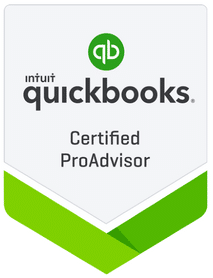- Patrick Roney
- (877) 503-8607
Follow Us :
Follow Us :
Proledge
February 20, 2013

The decision to start your own business is an empowering one. You finally get to do things your way, on your terms. Of course, it’s the most important job of your life and each decision you make shapes your future success, or failure.
One of the most important elements of making sure your small business is successful is knowing what sets you apart. What makes you special in the eyes of the consumer? Why should they choose you over your competitor?
Do you have an “elevator speech” prepared to quickly explain what makes your brand unique? It needs to be simple, but form a connection between your business and your customers. This positioning is how you want your customers to perceive your business in relation to your competitors. It needs to be the core of all communication – with your customers, team/partners and vendors/suppliers.
If you’ve never gone through the exercise of outlining your point of differentiation, below are a few simple steps to follow.
1. The first step is to have a clear understanding of your key customers’ needs and desires. What do they really want from you and your competitors products/services?
Consumer needs and desires typically have both a rational and emotional element (eg. Proledge provides accurate and reliable bookkeeping services so I can focus on growing my business.) Customers show loyalty to a brand or business they feel an emotional attachment to. If you have customers ask them for feedback, if you are just starting out consider doing a simple market survey.
Also, think of the brands and businesses you are most loyal to and why. This will help you with discovering your own key point of difference.
2. In relation to the key customers’ needs and desires determined in step one, determine your key strengths and weaknesses versus 2-4 of your competitors. Make sure to include the market leader in this comparison.
When looking at your strengths and weaknesses, just examine those areas that differentiate your small business from your competitors.
3. Next, evaluate your business’ key features (i.e. what your product does or what your service provides) and benefits (i.e. the positive values your customers receive such as accurate bookkeeping service or peace of mind) that you determined in step two.
The goal is to have key features and benefits that link back to your customers’ needs and desires better than your competitors.
4. You should now be able to choose the one key feature and its benefit that will give your business its key point of difference which you can maintain and develop over time.
Then you, your employees and business partners should deliver the best customer service possible with every single consumer interaction. Make that your point of difference!
If you want to grow your current customer base make sure you’re building on a strong foundation. Knowing your key point of difference is one of the critical components necessary to thrive in today’s competitive marketplace.


Fill out the form below to sign up to our Blog Newsletter and we’ll drop you a line when new articles come up.
Bookkeepers.
Professional. Affordable.
ProLedge is a bookkeeping services firm.
Copyright © 2024 All rights reserved.
Hello. Can we help you?